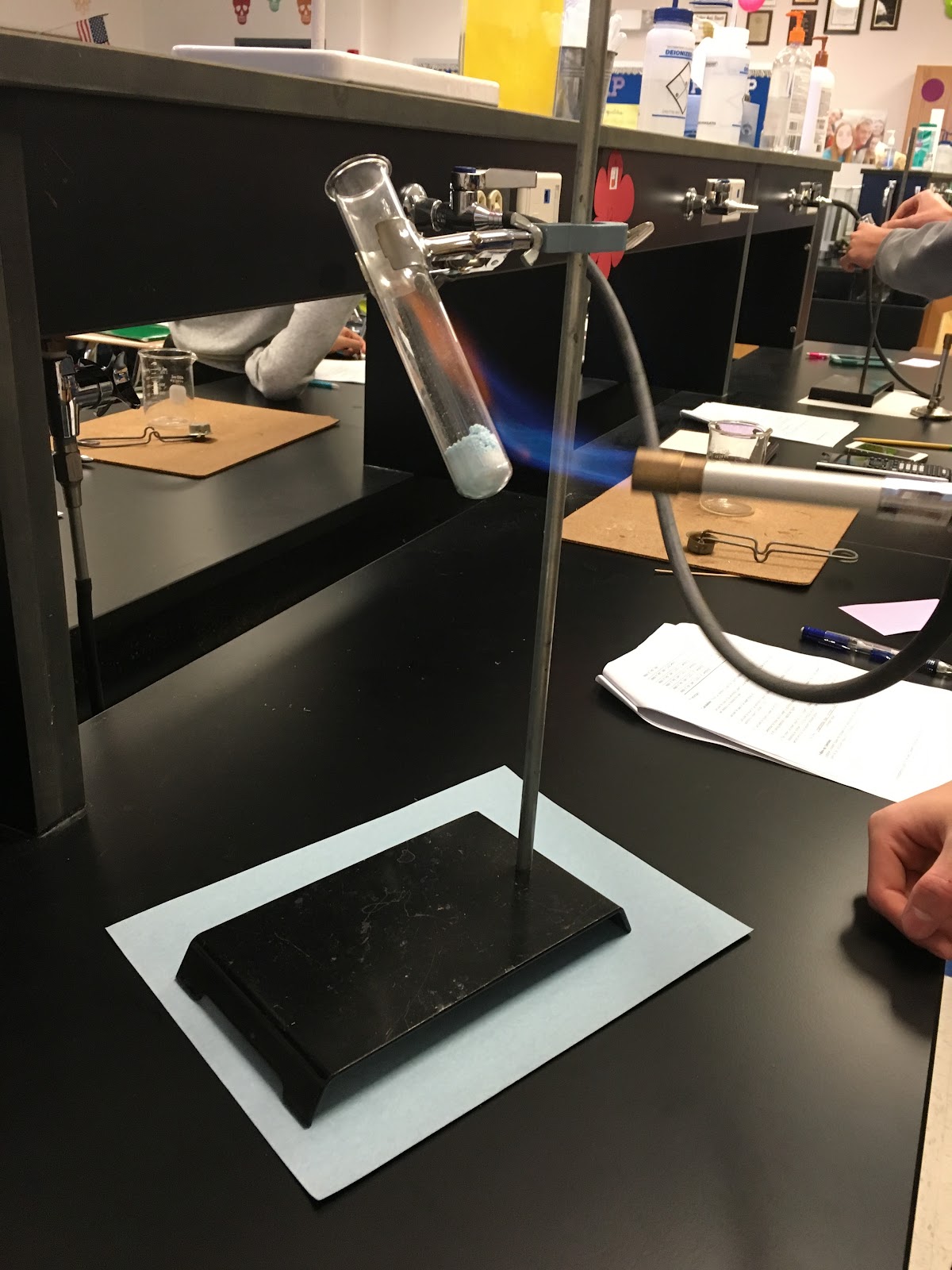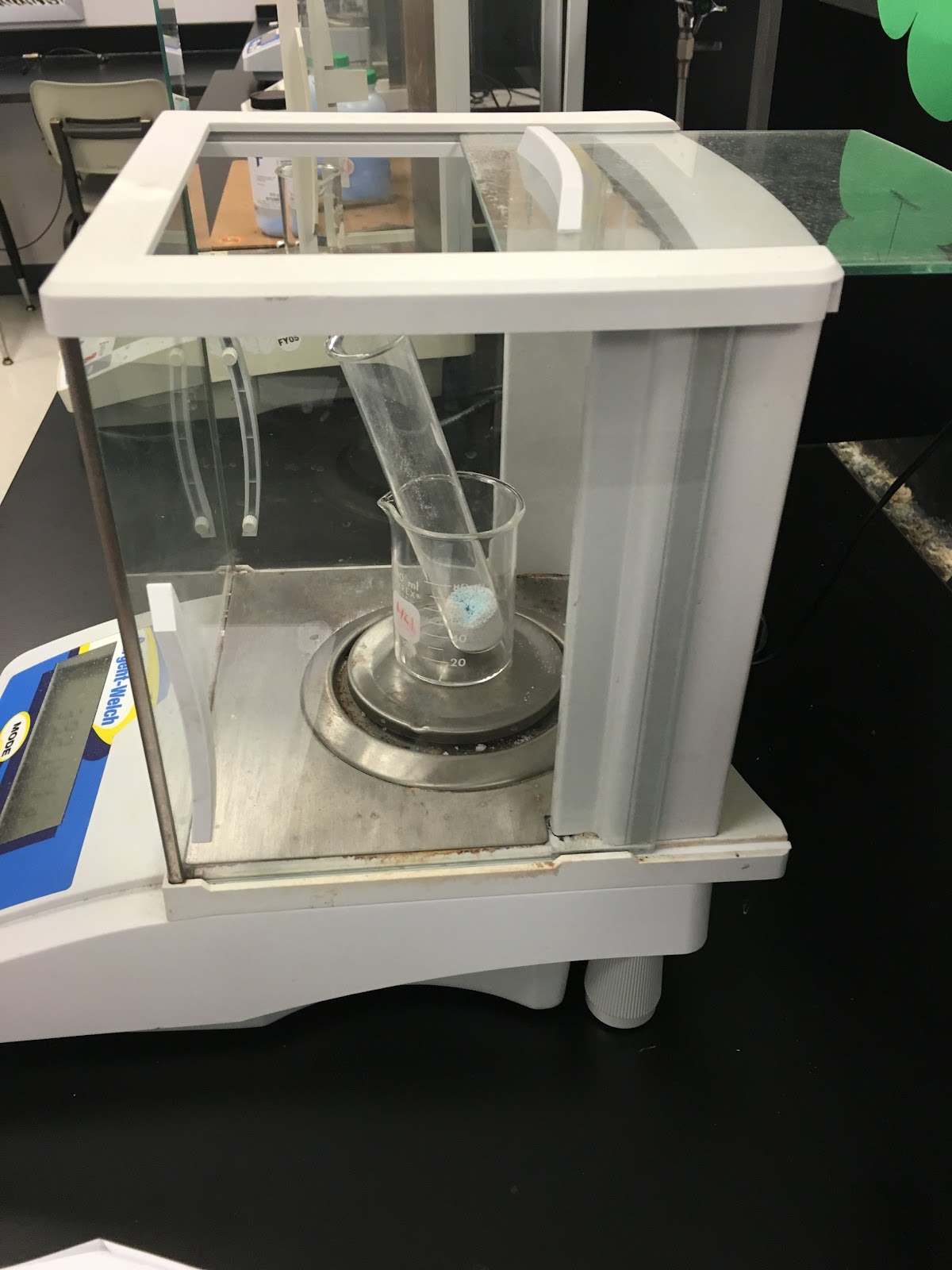Acid-base reactions are reactions that form water as a product. The water that is formed as a product is the driving force of these reactions. Along with the production of water, acid-base reactions also produce a "salt", a cation of the base and anion of the acid.
In acid-base reactions, strong acids will produce H+ as a product. Strong acids can also be determined by looking at whether it is HCL, HBr, HI, or if the oxygen's outnumber the hydrogen's by two or more.
Strong bases contain a hydroxide (OH-) anion in the reactants of an acid-base reaction. When any Group 1 or Group 2 metals are with the OH- anion, it is a strong base.
However, when there is a weak acid or base in an acid-base reaction, the weak acid will not protonate completely and the weak base won't completely.
This is helpful in studying characteristics of strong acids and bases
I found this video to be helpful
Monday, November 30, 2015
Saturday, November 28, 2015
Solubility Rules Lab
The solubility rule lab was performed today in class in order to see how solubility rules affect the different chemical reactions. Using the solubility rules, we predicted which chemicals would cause a reaction when they were placed into the wells together. In the pictures below, there is the list of solubility rules and some of the chemical reactions that took place.
This quiz is helpful in practicing using solubility rules
Monday, November 23, 2015
Double replacement reactions
The first set of class notes for this unit were over double replacement reactions.
A double replacement reaction is when two compounds react together to form two new compounds. In these reactions, the positive ions replace each other.
The general formula for double replacement reactions is: AB + CD → AD + CB
Double replacement reactions have four different driving forces:
- Formation of gas
- Formation of water
- Formation of a solid
- Transfer of electrons
Monday, November 16, 2015
Empirical and Molecular Formulas
In class, we learned about empirical formulas and molecular formulas. These two different types of formulas have different characteristics; however, they sometimes are the same. An empirical formula is the lowest number ratio of elements in a compound- it can't be reduced. Molecular formulas are the ratio of masses in whole numbers of the empirical formula. Since molecular formulas are ratios of masses and whole numbers, they can be the same as its empirical formula. In order to calculate An empirical formula, you take the mass percentage of the element and change it to grams. Next, divide the grams of each element by the molar mass, found on the periodic table. After having calculated the moles, the mole ratio is calculated and put into the lowest mole number. The answer can either end with a whole number or a decimal that can be multiplied by a whole number into a whole number.
Some links I found helpful in working on empirical and molecular formulas:
Empirical Formula
Molecular and Empirical Formulas
Formula Practice
http://quantummechanics.mchmultimedia.com/2011/general-chemistry-general-chemistry/004-empirical-formula-in-chemistry/
http://slideplayer.com/slide/235679/
Some links I found helpful in working on empirical and molecular formulas:
Empirical Formula
Molecular and Empirical Formulas
Formula Practice
Thursday, November 12, 2015
Hydrate Lab
In class we performed the Formula of a Hydrate Lab in order to determine the formula of the hydrate CuSO4 * nH2O. To determine the formula of CuSO4 * nH2O, we took the mass of the test tube and about 2 cm of Copper (II) Sulfate, then using a Bunsen burner, we heated most of the water out of the hydrate. After the water was driven off, we took the mass again to be used for the anhydrous and then calculated the mass of the water driven off. Then we were able to convert the anhydrous and water driven off into moles in order to find n.



A practice link for hydrates:
Determine the Formula of a Hydrate
A practice link for hydrates:
Determine the Formula of a Hydrate
Wednesday, November 4, 2015
Chemical composition
Today we took our first set of notes over our new unit, chemical composition. This section shows how you can convert from representative particles to moles, moles to representative particles; moles to mass, mass to moles; volume at STP to moles, and moles to volume at STP. By using these conversions, the number of moles, atoms and grams in an element can be determined. I find the mole road map we were given in class to be very helpful in converting between the different properties. The mole road map seems like it will be very beneficial throughout this unit.
http://mrdchemdwiki.wikispaces.com/Chemical+Quantities
Some helpful links for conversions:
Monday, November 2, 2015
Chemical Composition Pretest
Today in class, we took a pretest for our next unit, chemical composition. After taking the pretest for this unit, I know that I'll need to make sure I understand the concepts very well. With previous pretests I have recognized some information, even if I didn't know how to answer the questions; however, with this pretest I only recognized mol in some of the equations. And although I recognized mol in some equations, I have no idea how the mass of one mol of an element can be calculated.
Subscribe to:
Posts (Atom)






